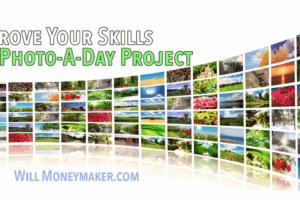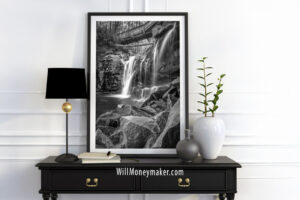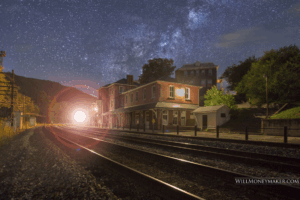Which camera is right for you? We could talk all day and next week — about various camera brands, models, and the features each offers. At the end of the day, however, the camera that works best for you is the best one.
Chase Jarvis said, and in fact titled his book, “The best camera is the one that’s with you.” These are wise words because with no camera at all, obviously, you won’t be taking photographs. But that doesn’t tell the whole story. Certainly, if you are just beginning, then any camera will help you get started. But as you advance, you will need something more.
So which camera will fit your needs? It’s simple: The best camera for you is the one that helps you out the most. It should be intuitive and give you features you’ll use often to simplify the photographic process. It shouldn’t hinder your work in any way.
A camera is a tool, first and foremost. Think about it like a pencil. If you are trying to write something, then you don’t want a pencil with an eraser that doesn’t work well. You won’t want to fight with the lead breaking all the time. You just want it to work and write well without much fuss. The same goes for your camera — you want a piece of equipment that doesn’t get in your way.
Of course, this is a bit generalized, so I’d like to discuss some specifics. Here are some of the things that I look for in a camera.
Opt for Simplicity
When I talk about simplicity, I’m not talking about a camera lacking features. Instead, I mean that the camera's operation should be simple.
Take the camera’s menus, for instance. Are they laid out in a way that is easy for you to navigate, or is the menu design counterintuitive? Obviously, not every function on a modern camera can be assigned its own button to access it immediately, but you also shouldn’t feel like you are wasting time sifting through the menus in search of what you need.
Are they all marked in a way that is easy to read and understand, or will you spend undue time pressing the more obscure buttons, trying to remember what they do? In addition to this, the buttons — really, the entire interface — should be laid out so that you can navigate them easily. This is particularly true of the shutter release. Most cameras are designed to place the shutter release in the same general spot from one camera to the next, but if you have larger or smaller hands, test the shutter release on each camera that you look at to make sure it fits your hand.
Finally, does the camera allow you to use program buttons? Many photographers use certain settings frequently, and customizable program buttons help you easily access those settings.
Make Sure the Camera is Comfortable to Carry
Some photographers are perfectly happy with a heavy backpack or one of those Red Rider wagons that they can use to wheel around a massive camera and all kinds of equipment. Other photographers don’t want to feel like they have an anchor around their neck. They’d prefer something lightweight so that they can travel farther with ease.
Keep this in mind as you shop for cameras — and the rest of your gear, for that matter. Buy only what you are willing to carry into the field.
Do You Need an Articulated Live Screen?
For some, the answer is no. Perhaps you are comfortable bending into different positions to view the camera’s screen while shooting. However, if you aren’t comfortable bending into odd positions, or if you simply want the convenience of a screen that is viewable at any angle, then an articulated screen is definitely worth your while.
Think About Ergonomics
Simply put, a camera that doesn’t fit your hands well will not work for you. Try out various cameras, regardless of features or brand names, and evaluate your comfort level with each. Here are some factors to take into account:
- Do the grips fit your hands well, or are they too large or small? A camera that is too large for your hands will feel hefty, and various features will be difficult to reach with your fingers, while a camera that is too small feels like you could easily drop it on accident, and you are likely to press buttons on accident.
- What about the lenses? Large fingers find it difficult to operate narrow lens rings. Another issue is how the lenses attach to the camera body. Ensure you are comfortable with the lens mount system you choose.
- Make sure to look through the viewfinder, even if you prefer using the live view a lot of the time. It should be clear and bright, and the LED displays on the side should be easily readable.
What Will Your System Cost You?
Cameras come in all budgets, from extremely inexpensive new and used DSLRs to DSLRs that cost tens of thousands. The cost of your first kit shouldn’t be your only consideration. How much will future lenses cost you? Will the high cost of your system prevent you from collecting the lenses that you need later on? You’ll need to choose a camera that fits both your budget and your needs as a photographer.
Then there is the cost of future-proofing. Camera models, brands, and lens mounts change all the time. Today, you might decide on one of the cheaper, lesser-known brands, but what happens in ten years when you have a large collection of lenses for that brand, and the manufacturer is no longer producing new camera bodies? You’ll save money now by opting for one of the major brands that will continue to support the lenses and gear you buy long into the future.
Whether you are buying your first camera or your fifth, it isn’t a choice to be taken lightly. Weigh all factors and buy the camera that works well for you.
Now, go and enjoy the beauty of God’s creation through your lens.




